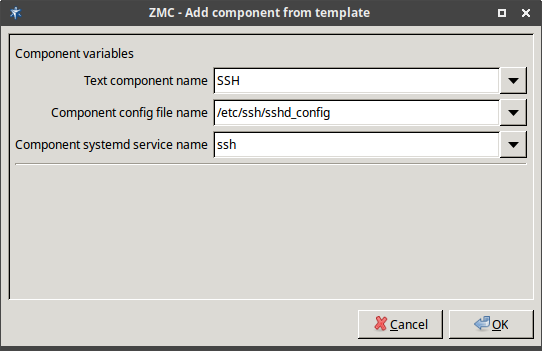8.1.1. Procedure – Configure services with the Text editor plugin
Select a configuration template.
By default, there are some predefined configuration templates available, these are actually configuration file skeletons for the given services.
Unless you want to configure DNS or NTP services, or other predefined text components, select the Text editor minimal template.
The following configuration window appears.
Provide the name of the Text component.
This parameter sets a label for the component.
Provide the name of the Component configuration file.
Component configuration file name refers to the actual configuration file on the host that you want to edit.
It is most likely a file in
/etcor in one of its subdirectories since this is the default location for configuration files.Set the Component systemd service name.
Component systemd service name refers to the name of the systemd service that is used to start, stop, restart, reload or check the status of a given service. Without providing this option it is not possible control the service from ZMC.
Note ZMC runs the
/bin/systemctl start/stop/restart/reload/statuscommand with the given parameter.Click after setting the necessary parameters.
The main window of ZMC reappears with an empty component pane. This is normal. Before working with the desired configuration file it is possible to download the content from the selected host.
Download and edit content from the selected host.
Use the following button in the button bar to download the file to ZMC:

You can edit the configuration file.
Propagate the modifications to the firewall.
The steps are identical to that of the other components: commit the edited file to ZMS and then upload it to the host. Finally, the service can be started/stopped/restarted or reloaded the usual way.
Published on May 30, 2024
© BalaSys IT Ltd.
Send your comments to support@balasys.hu




